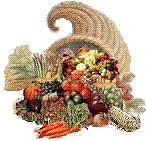
you came from
Safe Water
Contaminated food and water can be a problem following any storm involving flooding. Floodwaters may carry silt, raw sewage, bacteria, oil, or chemical wastes.
Intestinal diseases, causing diarrhea and dysentery, are the most likely illnesses to be spread from flooding. The parasite giarardia and intestinal viruses present in floodwater are most common. Waterborne transmission of E. coli, Salmonella and Shigella is also a concern. Giardia symptoms may begin within a few days after infection. Cryptsporidia must be filtered out. Iodine has no effect on it because it enters the body in a type of hibernating stage, and only hatches into the active form after several weeks of incubating in the intestines.
Donít drink or swim, bathe or play in floodwater or wilderness waater. Any pink tissue, like lips or the inside of the nose and eyelids, is porous, and can absorb microorganisms. Licking lips wet with contaminated water can be as bad as drinking it. A dip under a waterfall or a splash of spray can mean a bout with a bad intestinal bug.
Clean dishes and kitchenware that have been flooded before using them. If you are washing dishes, add 1/2 cup Clorox to each (8 gallons) sinkful of questionable rinse water, and let the dishes sit in the rinse for at least 10 minutes. Then rinse each dish in disinfected drinking water. Air or sun dry.
Be sure to use boiled or disinfected water to brush teeth and rinse toothbrushes. Wash hands thoroughly after exposure to it. Be especially careful to keep children away from floodwater. Protect against cutting yourself or exposing cuts to the contaminated water.
Safe Drinking Water:
Filters for regular tap water will NOT clean flood-contaminated water. These methods will destry bacteria, but will not remove other contaminants such as heavy metals, salts and most other chemicals. Before purifying, let any suspended particles settle to the bottom, or strain them through layers of paper towel or clean cloth. Make water safe to drink by one of the three following methods:
- Boil water for three to five minutes in a clean container. Water must be at a rolling or vigorous boil for the three minutes. To improve the taste of boiled water, pour it back and forth between two clean containers to restore the oxygen. Add one minute of boiling time for every 1000 feet of elevation above 10,000 feet.
- Filter water (for example through a coffee filter)and let any particles settle out. Mix one-half (1/2) teaspoon of liquid, unscented chlorine laundry bleach, such as Clorox or Purex, with two-and-one-half (2-1/2) gallons of water in a clean container, and let stand for at least 30 minutes. It should be clear and have a very slight bleach odor at the end of the treatment. If it does not, repeat the treatment only one time. If it remains cloudy, do not drink it unless it stands overnight and clears.
- The Red Cross no longer recommends the use of iodine, since it should not be used for pregnant or nursing women, but the method for using it is to add four (4) drops of tincture of iodine solution to one (1) quart water in a clean container. After mixing thoroughly, allow to stand for at least 30 minutes before drinking. After purifying, dding a little vitamin C or powdered fruit drink flavoring to this water will improve the taste.
How to make a clean container
With chlorine bleach:
- Remove all visible dirt or soil from the container.
- Make a solution of 1 tablespoon of liquid household bleach to each gallon of water, and pour in enough solution to fill the container. Soak the lid or cap in the same solution.
- Let the bleachsolution remain in the container for 10 minutes, then pour out the solution.
- Rinse the container with drinking quality purified water. Pour out the rinse water.
- Fill the container again with purified water, then cap the container for later use.
- Use the stored water within six months.
By boiling:
- You may boil glass bottles or jars to disinfect them.
- In a large pan submerge the glass bottles or jars and lids in water.
- Bring to a rolling boil and then boil the containers for 10 minutes.
- Fill the glass bottles and jars with purified water and cap the container for later use.
- Use the stored water within six months.
